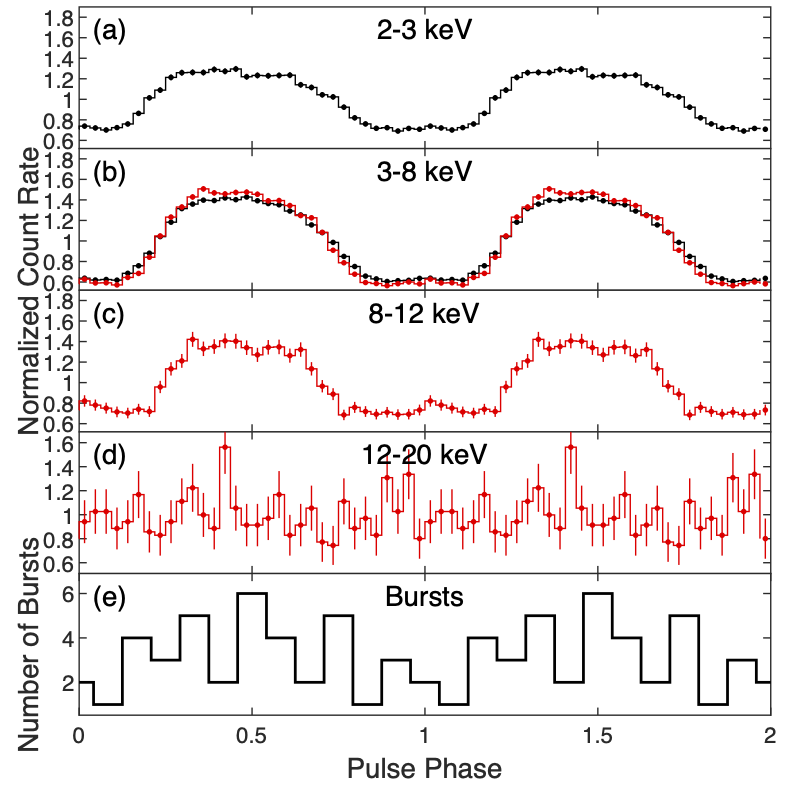NICER / ISS Science Nugget
for September 16, 2021
NICER Monitoring of a New Magnetar Explores its Unusually Long-Lived Activity
As reported here on
10 June 2021, NICER discovered X-ray pulsations suggestive of a new "magnetar" - a highly magnetized neutron star - following the detection of a short burst from an unknown source by NASA's Swift observatory on 3 June. NICER has monitored this object, Swift J1555.2-5402, nearly continuously since then. This week, a report of results from the first month of NICER and Swift observations, by T. Enoto and collaborators, was accepted for publication in The Astrophysical Journal Letters (
preprint).
Compared to the approximately two-dozen magnetars currently known, one exciting aspect of Swift J1555.2 is its long-lasting activity following the outburst that led to its discovery. In previous cases, magnetars have been known to suddenly brighten in X-rays and then to fade to quiescence within a few weeks. Swift J1555.2, by contrast, remained at near-constant brightness for well over a month from the beginning of the outburst. Analysis of the evolving X-ray emission spectrum measured by NICER showed that the very slowly decreasing flux could be attributed to shrinking of the emitting "hot spot" on the star's surface, not a decline in its temperature. In addition to the pulsed, soft X-rays that originate in thermal radiation from the neutron star's surface, non-thermal emission in harder X-rays arises from the powerful magnetosphere. Over the span of a month and more, NICER and Swift have captured dozens of millisecond-duration bursts of radiation; evidently, this bursting activity - likely due to reconnection of twisted magnetic field lines in the magnetosphere - is also long-lasting. A plausible explanation, then, is that radiation from ongoing bursting activity contributes to sustained heating of the surface.
NASA's NuSTAR telescope joined the observing campaign to provide higher-energy X-ray coverage, beyond NICER's reach, of Swift J1555.2. Above 12 keV photon energy, NuSTAR helped characterize another, steady component of emission from the magnetosphere (left panels of accompanying figure), which is responsible for a precipitous drop at higher energies in the fraction of the X-ray flux that is pulsed (right panel of figure). Meanwhile, radio observations with the Deep Space Network (DSN) set an upper limit on radio emission from Swift J1555.2.
NICER monitoring of Swift J1555.2 continues, to trace the long-term evolution of its brightness, and to test the hypothesis of surface heating via bursts through an eventual measurement of the distribution of bursts across the star's rotational phase (lower panel of the figure below left).


Figure: Left: The top four panels show the modulation of X-ray intensity, in four photon energy ranges, with the 3.86-second rotation of magnetar Swift J1555.2. Black and red points represent NICER and NuSTAR measurements, respectively, and two rotation periods are plotted for clarity. The lowest panel indicates the rotation phases at which non-thermal, millisecond-duration bursts from the star's magnetosphere were detected; the burst statistics are, at present, insufficient to draw any conclusions about whether bursts are preferentially emitted near the peak of the low-energy modulation. Right: The fraction of X-ray emission that is seen to be pulsed with the 3.86-second period.
<< Previous
Main Index
Next >>